Trump uses body language and surprise tactics to unsettle President Ramaphosa during high-stakes meeting meant to reset U.S.–South Africa relations.
President Cyril Ramaphosa hoped his first official meeting with Donald Trump would restore U.S.–South Africa diplomatic relations.
Instead, it became a tense confrontation marked by calculated power moves and psychological tactics.
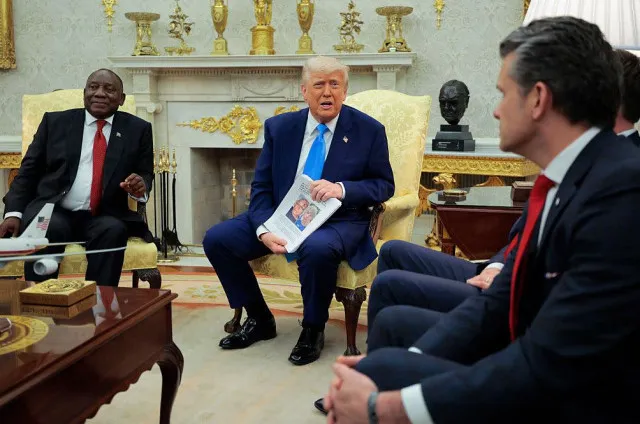
According to body language expert Judi James, Trump’s composed demeanor concealed a carefully prepared ambush.
The South African leader entered the White House optimistic, expecting polite diplomacy and investment talks.
However, the mood quickly changed when Trump used subtle signals and visual “evidence” to accuse Ramaphosa’s government of complicity in so-called “white genocide”—a debunked conspiracy theory promoted by far-right commentators.
Trump shatters Ramaphosa’s confidence with video on white persecution
At first, Trump appeared cordial. He smiled, discussed golf, and offered no indication of hostility.
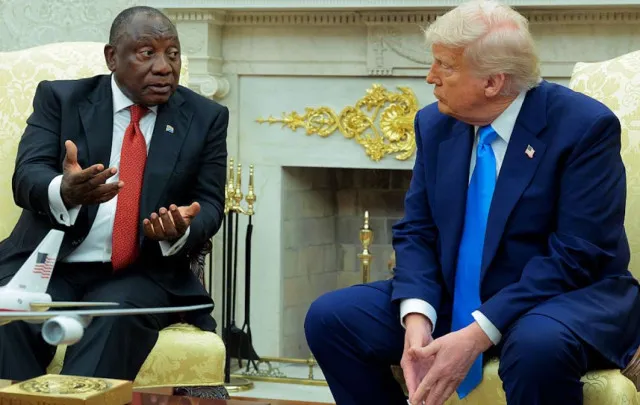
However, his “poker face” masked strategic intent, said James. Moments into the meeting, Trump asked staff to dim the Oval Office lights and played a montage of controversial clips, allegedly showing violence against white South Africans.
“This was Trump’s Goldfinger moment,” James said, likening it to a villain’s reveal. “Ramaphosa squirmed and tried to respond but was visibly unsettled.”
The South African president looked confused, tried to laugh, and fidgeted in his seat. When pressed, he asked, “Where is it? I’ve never seen it,” to which Trump coldly responded, “It was South Africa.”
Trump used power plays to unsettle Ramaphos
Though known for his aggressive handshakes, Trump greeted Ramaphosa neutrally, offering no early dominance signals.
But once seated, he shifted the power dynamic, performing small gestures designed to undermine the South African leader.
These included dismissive facial expressions, mocking asides to reporters, and disinterest in Ramaphosa’s statements about peace and Mandela.
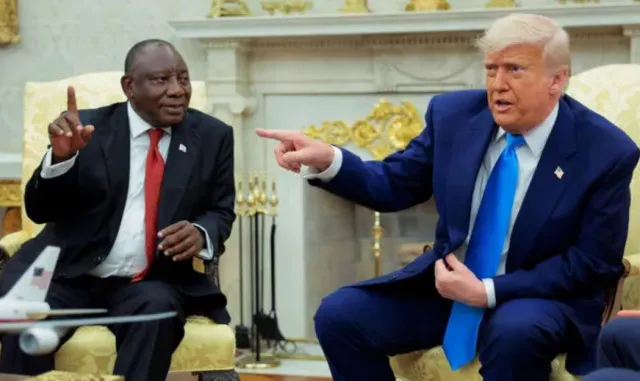
“Trump played to the press more than to Ramaphosa,” James observed, pointing out the president’s habit of miming sarcasm while others speak.
Disagreements between the two on crime, land reform, and political violence remained thinly veiled.
Trump repeatedly returned to white farmer safety, while Ramaphosa pushed back, calmly debunking the genocide narrative.
South Africa’s delegation included key voices to challenge Trump’s accusations, including white agriculture minister John Steenhuisen
In a strategic move, Ramaphosa brought agriculture minister John Steenhuisen, South Africa’s most senior white politician.
He calmly acknowledged the country’s crime problems but rejected the narrative of white exodus.
“Most white farmers want to stay in South Africa and make it work,” Steenhuisen told Trump.
He added that more policing was needed but emphasized that law and order, not race-based violence, was the core issue. Ramaphosa then **referred specific questions about Afrikaans farmers to Steenhuisen**, sidestepping Trump’s provocations with composure.
Ramaphosa praised for staying calm under Trump’s barbs
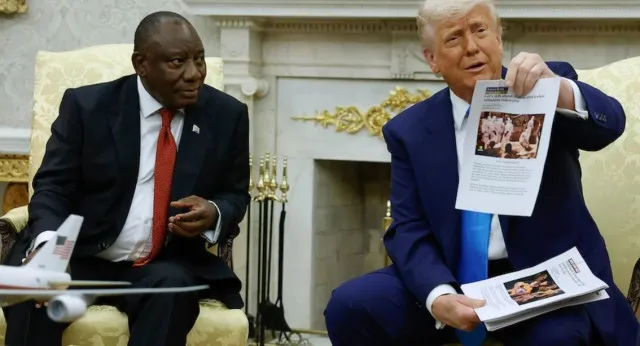
Many observers, including Land Reform Minister Mzwanele Nyhontso, praised Ramaphosa’s calm under fire.
Rather than respond with anger, the South African president kept his composure, maintaining the dignity of his office throughout the difficult encounter.
“There is no genocide in South Africa,” Nyhontso told BBC. “There’s crime, as in many countries, and it affects everyone.”
Ramaphosa reportedly handled Trump as he would South Africa’s parliamentary opposition—deflecting, redirecting, and returning to his core message of cooperation and development.
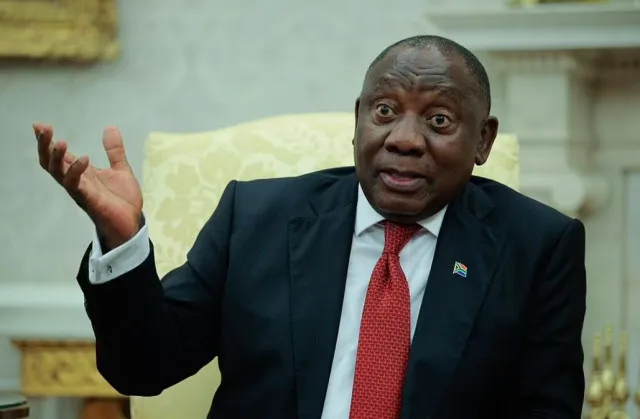
After the meeting, Ramaphosa insisted it achieved key objectives: restoring dialogue, promoting trade, and re-engaging with the U.S. on critical issues. While Trump remained focused on land reform and race relations, Ramaphosa emphasized economic partnership and long-term diplomacy.
“We’ve been able to achieve what we set out to achieve,” Ramaphosa said. “We continue to engage on investment and trade.”
Although the tone of the meeting was confrontational, analysts acknowledged Ramaphosa’s discipline in steering the conversation toward diplomacy, even when faced with politically charged accusations.